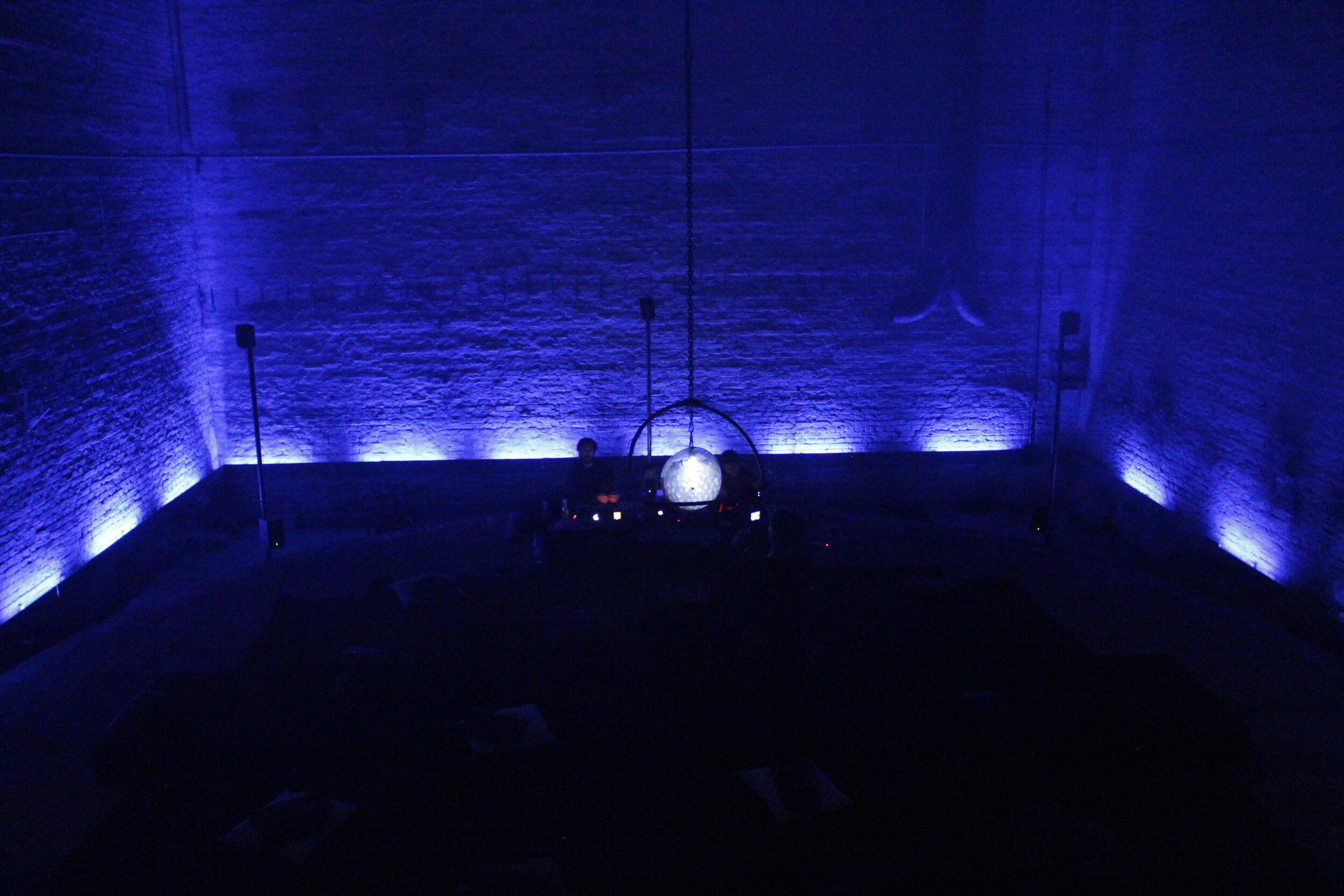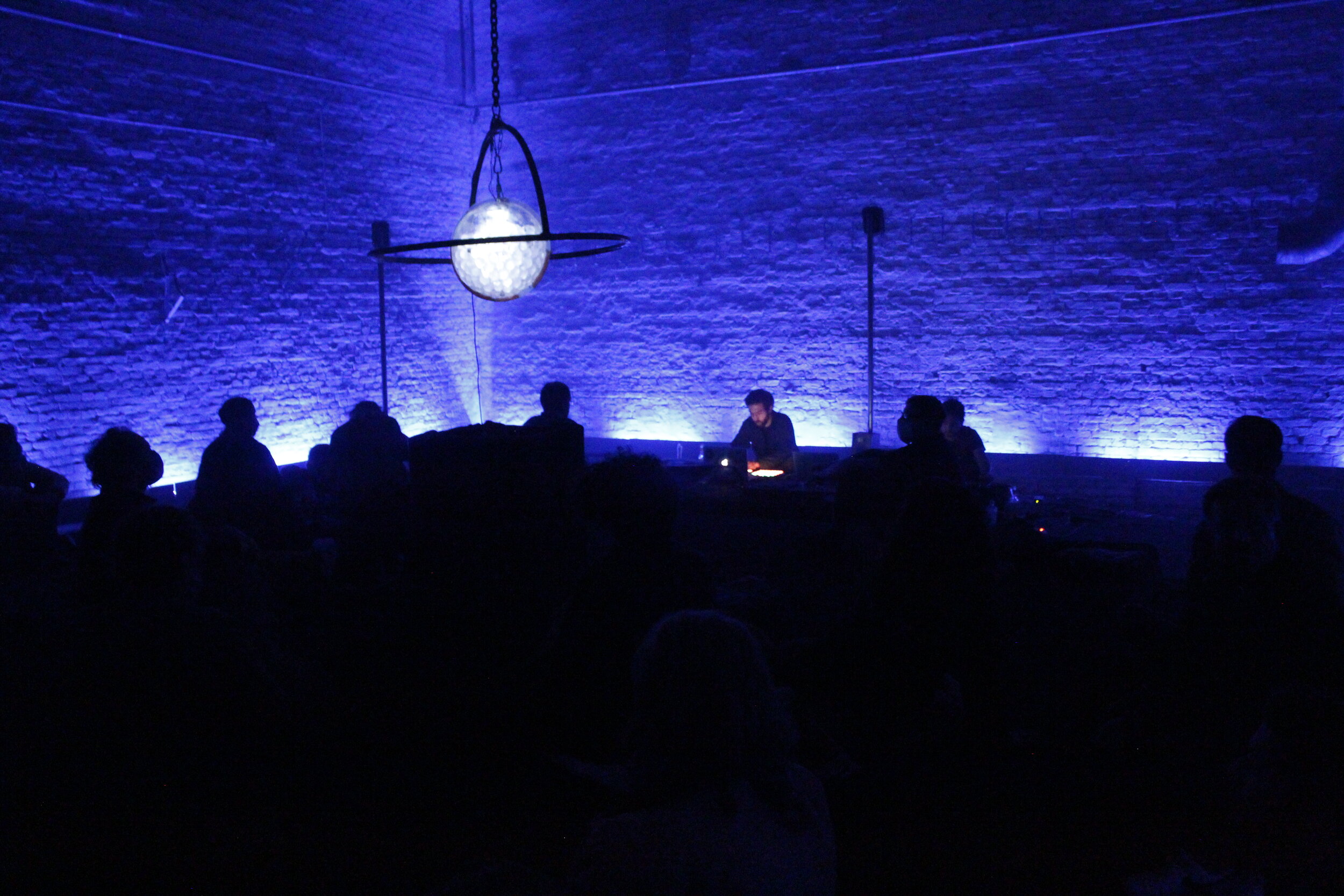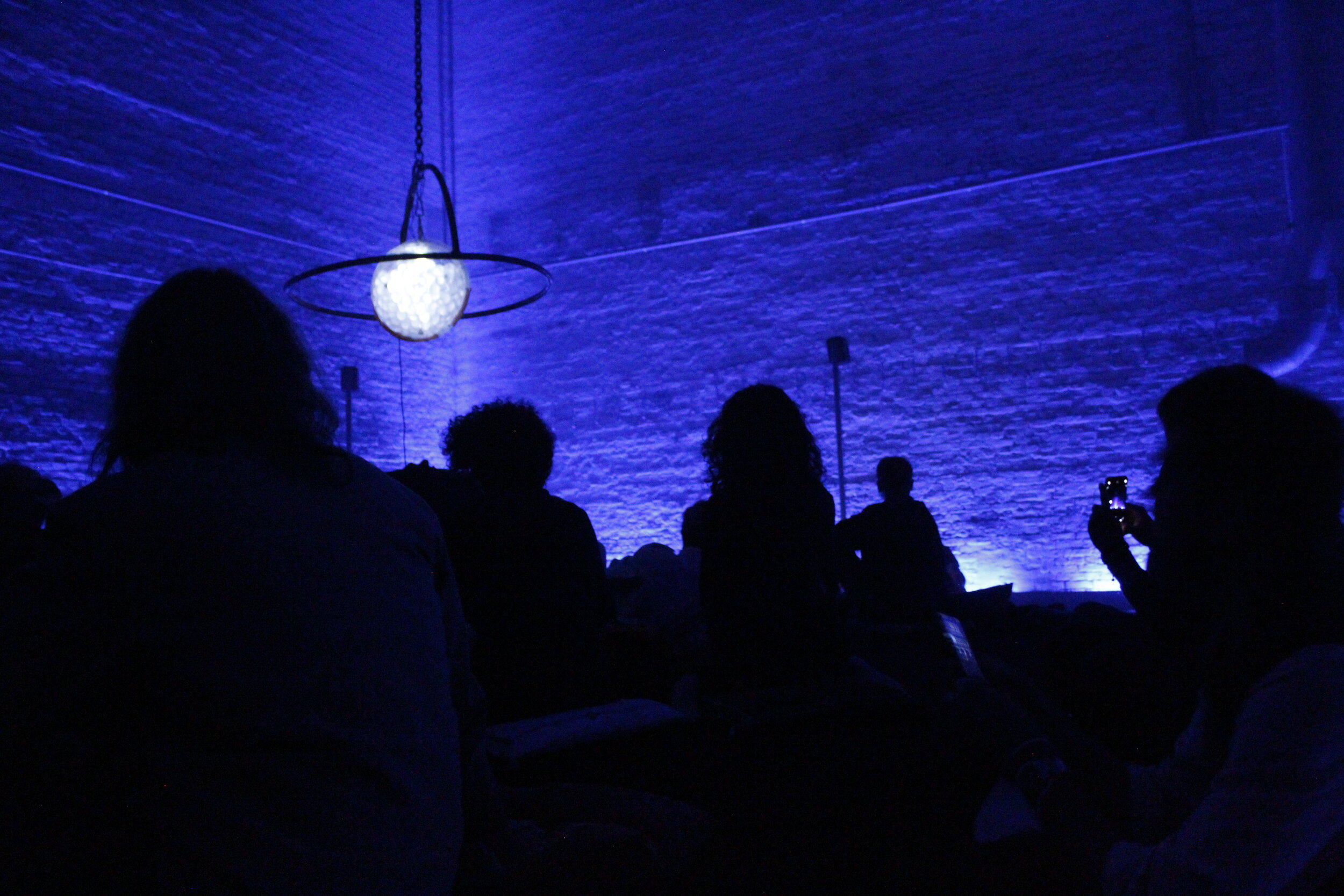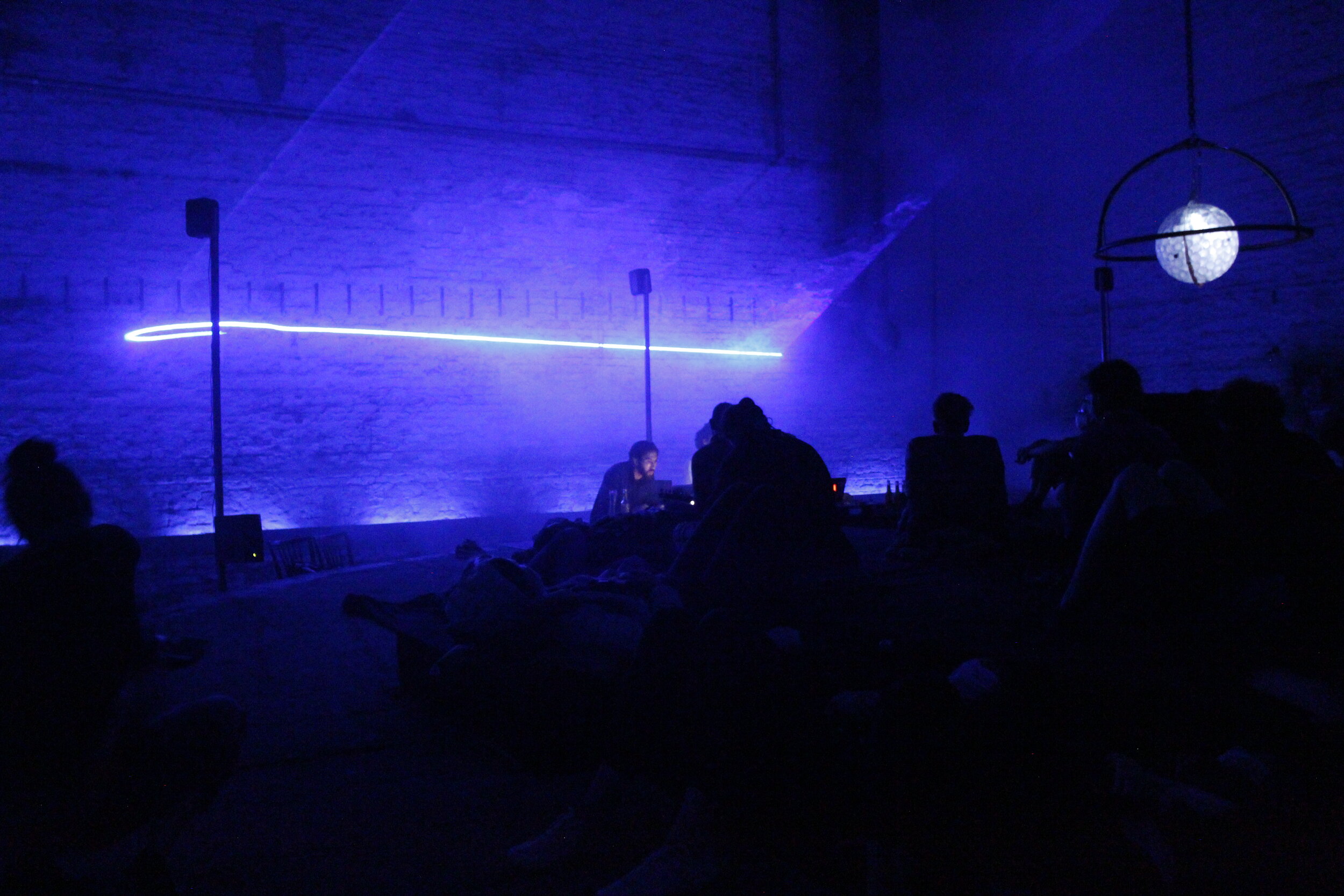“Wherever we are, what we hear is mostly noise. When we ignore it, it disturbs us. When we listen to it, we find it fascinating.”
John Cage
What is a frozen space?
and if space is sound, what is a frozen sound?
Quantasonics | frozen narratives
is a series of interactive spatial sound performances that takes places inside a unique immersive ambisonic installation centered around the acoustics of the slow transformation of ice into water.
Quantasonics offers, on the one hand, a site-specific platform and stage for a new type of sound-driven immersive performances, and a space for innovation and experimentation with ambisonic sound. On the other hand, it becomes a mobile laboratory for leading-edge research in spatial sound & media studies and spatial theory. By way of this foundational structure, Quantasonics bridges the predominant divide between artistic practice, the audience's active participation, and spatial sound research.
Based on the sonic narrative of melting ice, the project thus opens up a space for artistic inquiries and philosophical reflections on sound-based relationships to our environment – human and non-human, natural and built – to grasp the importance of shared and active listening for all personal, collective, social and future being.
Philosophy & Concept
The concept and design of Quantasonics was developed by recordat's artistic directors Ibrahim Owais and Basel Naouri, to explore the impact of shared sonic experiences on our habits of active-listening, and to offer new and innovative forms of live performances in an ever-changing world.
At the heart of the project lies the question:
How do we listen?
In a visually biased world, it is easier to perceive objects and spaces as inert, still, held in a fixed state, and separate from their immediate surrounding. Similarly, a frozen state is commonly correlated with its visual state of inertness and very quickly stripped down of all its inner processes and events. Representing micro-worlds as giant spatial structures and experiencing them in varying scales allows us to view the implications that quantum events have on their surrounding environment and on ourselves. Therefore, confrontation with such sonic structures deeply challenges our assumptions about reality and the conditioning of pattern recognition.
We are immersed in a world of sound, yet often realize no more than the ripples that appear on the surface. As individuals, we can only influence the direction of the ripples
//












